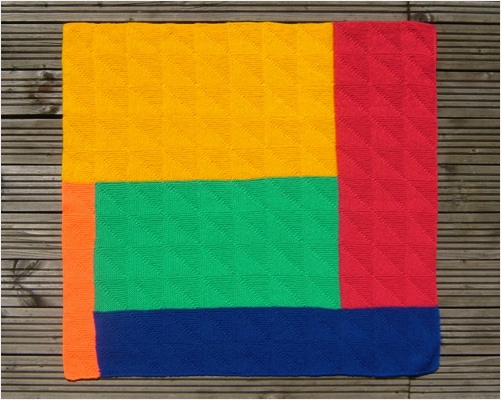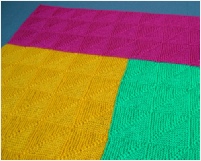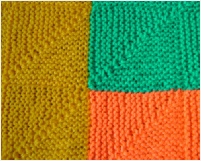

Click to read general information about afghans



Buy a pattern
for this afghan
on the order form
 Buy now
Buy now

ORDER OF MAGNITUDE
Order of Magnitude is designed to help children with counting and starting to assimilate the concepts of multiplication and area.
Many adults would probably need to study it for some time to work out what is special about the arrangements of squares.
It is one solution to the problem given below.


Scroll down for more information about
Order of Magnitude

RELATED DESIGNS
PUZZLE AFGHANS
CONSERVATION OF AREA

CONSTRUCTION INFORMATION
The version shown was made in one piece with the stitches for each mitred square being picked up from existing squares.
The pattern includes instructions for:
diagonally-
straight garter squares
stocking stitch squares
crochet squares
Different types of squares require different methods of construction.

CROCHET/KNITTING INFORMATION
Use any yarn, in five colours, and needles of your choice.
The afghan shown was made using mitred squares. The pattern includes instructions for other types of squares.
The photo shows a small afghan, suitable for a child. It can easily be made bigger by increasing the size of the squares.


Click to see
larger pictures

THE PROBLEM
Use five rectangles to make a square. The rectangles must have sides of 1, 2, 3, 4, 5, 6, 7, 8, 9 and 10, in any combination.
This afghan can help children to count and begin to understand the concepts of multiplication and area.

THE MATHEMATICS
Each of the first ten counting numbers is shown on the side of one of the rectangles.
Go on to count the number of squares in each rectangle. Children will gradually assimilate that 7 rows of 4 and 4 rows of 7 both give the answer of 28.
Compare the number of squares inside the rectangles to introduce the ideas of ‘bigger than’, ‘longer than’, ‘shorter than’, etc. to introduce the idea of area. Many children think that a long skinny rectangle is ‘bigger’ than a short fat one, even when the area is much smaller.

THE PATTERN
This afghan is in the same pattern booklet as Place Order, which uses similar techniques.
See Puzzle Blocks on the Order Form